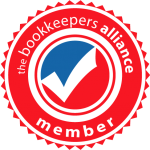
Bookkeeping with a personal touch
07759 983428


Bookkeeping with a personal touch
07759 983428

With less than a year until Making Tax Digital for Income Tax Self-Assessment goes live, here’s what you need to know:
What is Making Tax Digital?
Making Tax Digital (MTD) is part of the government’s plan to modernise the UK tax system, making it easier for people to get their tax right. The legislation applies to two taxes, for now, – MTD for VAT, and MTD for Income Tax.
Requirements include:
Who’s affected, and when:
How will MTD for Income Tax benefit me?
MTD for IT requires businesses to submit updates more regularly giving you a clearer view of your tax liability throughout the year, making it easier to plan for your bill. Plus, MTD software can speed up recordkeeping and automate parts of the compliance process, and improve accuracy.
Quarterly reporting deadlines
MTD for ITSA will change the tax reporting cycle. Bookkeepers will need to change to quarterly reporting for their clients, and clients will be required to provide paperwork more frequently. This is a must.
The standard quarterly reporting deadlines are:
However, these dates can be changed to calendar months to be in line with financial year.
Reporting requirements
Taxpayers will be required to maintain digital records of business and/or property income and expenses, including the following details:
Taxpayers with turnover from either self-employment or property below the £90,000 VAT threshold can choose to submit simplified “three-line accounts” and categorise each item as either income or expense and net profit.
There is an easement for landlords of jointly owned properties. They will not need to show their expenses in the quarterly updates, instead reporting them when finalising their year-end tax position. However, they do still have to submit their income each quarter, so are not exempt from making quarterly updates.
However, separate quarterly updates will be required for each business a taxpayer is involved in so that an individual who is a sole trader and a landlord will need to provide eight quarterly updates each year.
Taxpayers must then complete a final declaration of their tax position through MTD-compatible software at the end of the year – based on the current Self-Assessment return of 31 January. This includes:
Digital records must not be kept in spreadsheets unless those spreadsheets are API-enabled or used in conjunction with bridging software that allows two-way communication with HMRC systems.
Software
MTD software can help businesses, accountants, and bookkeepers submit accurate returns, reduce errors, and simplify tax planning.
Some software can submit both quarterly updates and year-end tax returns, but other products will only do one, so it’s important to check first.
For example, an individual might create their own digital records and send their quarterly updates but still want their agent to submit their tax return. In this instance, software that sends quarterly updates is sufficient.
Some software will be able to report all business income sources, whilst others may focus on a specific source. For example, there are products that are designed specifically for landlords.
Check out HMRCs website for more details


Registered with HMRC Anti Money
Laundering Scheme.



By continuing to use the site, you agree to the use of cookies. more information
The cookie settings on this website are set to "allow cookies" to give you the best browsing experience possible. If you continue to use this website without changing your cookie settings or you click "Accept" below then you are consenting to this.
